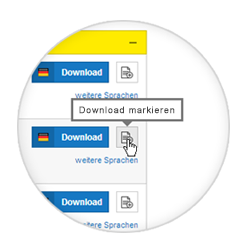Measuring through plastic tanks: Application of the Month
Industrial operations take advantage of plastic tanks, or poly vessels as they’re sometimes called, for a variety of reasons. These tanks are less expensive, certain chemicals need to be stored in plastic, and in the case of IBC tanks, mobility is a necessity. These types of tanks and vessels don’t always have process connections, or if they’re regularly being moved, getting a level measurement can be a challenge.
For these types of vessels in many operations, the level is recorded manually by a person physically checking the side and recording how high or low the fluid is. This lack of automation slows the entire process down and doesn’t allow for any kind of optimization. Automating this measurement is made easy with radar. Installing a radar above one of these tanks, or in the case of IBC tanks, above their normal position, is a non-invasive way to provide an automatic and continuous level measurement.
How it works
 Radar signals can penetrate non-conductive products like plastic. The radar signal essentially ignores the vessel structure and gets a reflection off of the medium inside. This means users can install a VEGAPULS WL S 61 or an 80 GHz VEGAPULS 64 above one of these plastic vessels and still get the measurement they need. This makes for an easy installation without having to penetrate the vessel or render an IBC tank motionless. VEGA has extensive experience with these types of applications, saving customers time and improving their process.
Radar signals can penetrate non-conductive products like plastic. The radar signal essentially ignores the vessel structure and gets a reflection off of the medium inside. This means users can install a VEGAPULS WL S 61 or an 80 GHz VEGAPULS 64 above one of these plastic vessels and still get the measurement they need. This makes for an easy installation without having to penetrate the vessel or render an IBC tank motionless. VEGA has extensive experience with these types of applications, saving customers time and improving their process.
Mounting tips and tricks
When mounting a radar above a plastic tank, there are a few things to consider to ensure you get an accurate measurement. Installers need to be aware of where the vessel is located and how the radar is mounted. Following a few best practices can deliver the best results.
Mount the radar above a plastic tank indoors only, away from the elements. That’s because weather like rain, snow, or other moisture on top of the vessel can reflect the radar signal and cause a measurement error. On the other hand, even some dust or dirt that accumulates on top of a vessel indoors won’t interfere with the radar signal thanks to the interior electronics.
 The sensor should be placed between four and eight inches above a curved portion of the tank or vessel. This additional space and curvature allows any minimal reflections from the vessel exterior to reflect laterally instead of directly returning to the antenna surface. In the case of an IBC tanks or other vessels with a flat top, this may not be possible, and additional adjustments may be needed. And finally, make sure the sensor is far enough from the sidewall because metallic objects outside of the vessel can be detected by the sensor.
The sensor should be placed between four and eight inches above a curved portion of the tank or vessel. This additional space and curvature allows any minimal reflections from the vessel exterior to reflect laterally instead of directly returning to the antenna surface. In the case of an IBC tanks or other vessels with a flat top, this may not be possible, and additional adjustments may be needed. And finally, make sure the sensor is far enough from the sidewall because metallic objects outside of the vessel can be detected by the sensor.
Conclusion
Discover which radar is right for you:
Related products
Export this article
Download as PDFShare this article
Comments ({{comments.length}})
{{getCommentAuthor(comment, "Anonymous")}} {{comment.timestamp | date : "dd.MM.yyyy HH:mm" }}
{{comment.comment}}





